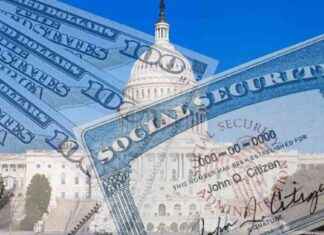Mortgage Refinance Demand Surges as Rates Hit Two-Year Lows
The mortgage refinance market is experiencing a significant uptick as current homeowners rush to take advantage of historically low interest rates. According to the Mortgage Bankers Association’s seasonally adjusted index, applications to refinance a home loan soared by 20% last week compared to the previous week. This surge in demand represents a staggering 175% increase from the same week one year ago.
The average contract interest rate for 30-year fixed-rate mortgages with conforming loan balances has decreased to 6.13%, down from 6.15%. This decline in rates has prompted a flurry of activity in the refinance market, with both conventional and government refinance applications seeing sharp week-over-week gains.
Joel Kan, vice president and deputy chief economist at the MBA, noted that the 30-year fixed rate has dropped for the eighth consecutive week to 6.13%, while the FHA rate has fallen below the psychologically significant 6% level to 5.99%. These lower rates have fueled the increase in refinance applications, pushing the refinance share of total mortgage applications to 55.7%.
Despite the significant increase in refinance activity, Kan points out that the level of refinance applications is still relatively modest compared to previous waves of refinancing. This is partly due to a seasonal slowdown in homebuying, as mortgage applications to purchase a home only rose by 1% for the week.
Buyers are facing challenges such as high home prices and limited supply of houses for sale, which may be contributing to the higher loan sizes seen in both purchase and refinance applications. The overall average loan size has reached a record high of $413,100, reflecting the current market conditions.
Factors Driving the Surge in Refinance Demand
Several factors are driving the surge in refinance demand, including the steady decline in mortgage rates to two-year lows. With the average contract interest rate for 30-year fixed-rate mortgages dropping to 6.13%, homeowners are eager to capitalize on potential savings by refinancing their existing home loans.
Additionally, the increase in refinance applications can be attributed to the overall strength of the housing market. Despite challenges such as high home prices and limited inventory, buyers are still active in the market, contributing to the overall demand for mortgage refinancing.
The Federal Reserve’s decision to keep interest rates low has also played a role in driving refinance demand. With the central bank signaling a commitment to maintaining accommodative monetary policy, borrowers are taking advantage of the favorable borrowing conditions to refinance their mortgages.
Outlook for Mortgage Rates and Refinance Activity
Looking ahead, mortgage rates are expected to remain relatively stable in the near term. While rates haven’t moved significantly to start the week, they may fluctuate in response to upcoming economic data releases later in the week and at the beginning of October.
Refinance activity is likely to continue at a steady pace as long as interest rates remain low and homeowners see opportunities to save on their monthly mortgage payments. The refinance share of total mortgage applications is expected to remain elevated, reflecting ongoing demand for refinancing opportunities in the current market environment.
In conclusion, the surge in mortgage refinance demand is driven by a combination of factors, including historically low interest rates, strong housing market conditions, and the Federal Reserve’s accommodative monetary policy. As homeowners rush to take advantage of potential savings, the refinance market is experiencing a significant uptick in activity, with both conventional and government refinance applications seeing sharp increases. Despite challenges such as high home prices and limited inventory, buyers are actively participating in the market, contributing to the overall demand for mortgage refinancing.








